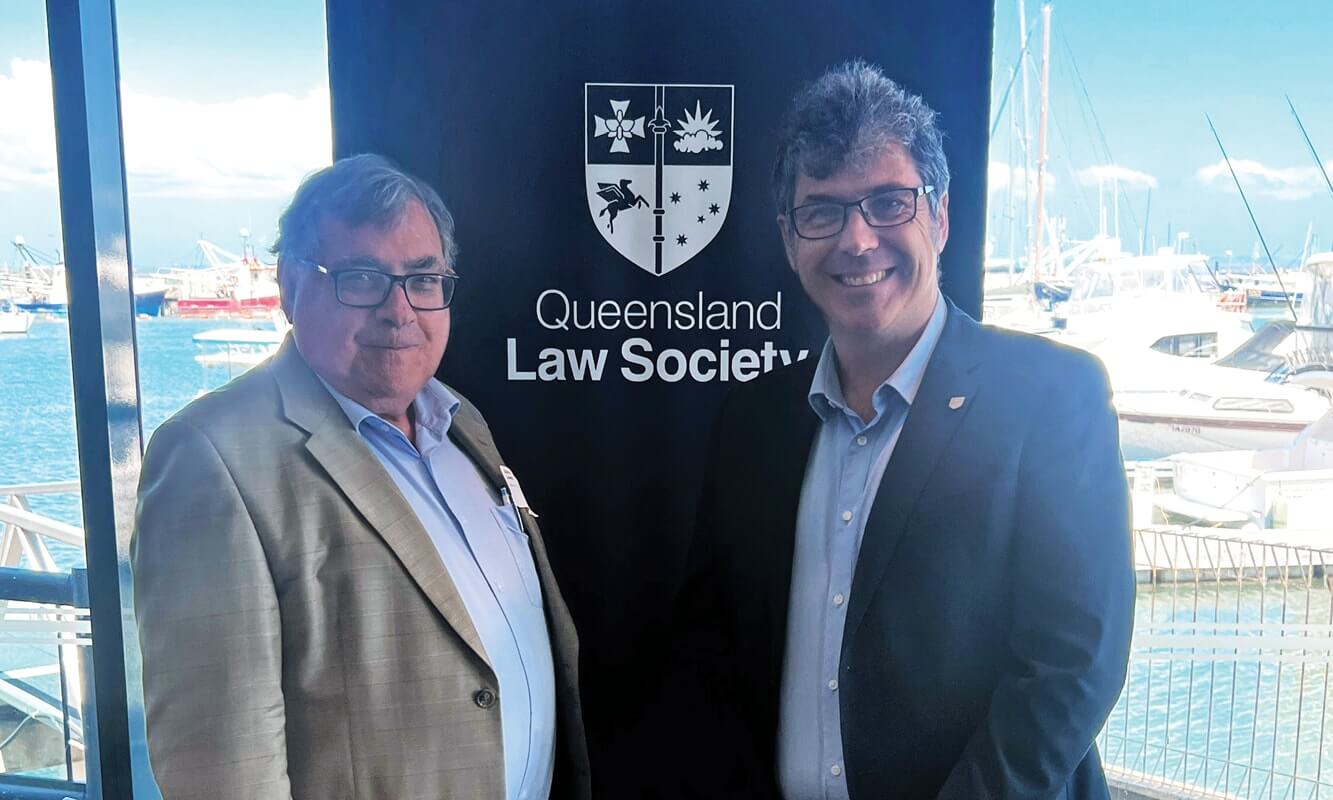Amidst the hurly-burly of pre-federal election chicanery and Budget 2022 hysteria, it would have been easy to blink and miss one of the more important Senate committee reports for lawyers in the last few years.
Federal Parliament’s final sitting week in March 2022 produced many shocks and revelations, but the Senate Legal and Constitutional Affairs References Committee (the committee) report on the adequacy and efficacy of Australia’s anti-money laundering and counter-terrorism financing (AML/CTF) regime didn’t rate a mention.
The truly difficult stuff tends to always happen quietly.
The battle for the gatekeeper professions
AML/CTF regulation was introduced into Australia in 2006 in response to international recommendations of the Financial Action Task Force1 (FATF) to combat the scourge of money laundering and terrorism financing. The initial rollout, known as Tranche 1, largely applied to financial services businesses.
Since 2006, there has been an ongoing battle for the so-called ‘Tranche 2’, which is the extension of the compliance regime to businesses and professions which are seen to be either gatekeepers against, or facilitators of, money laundering activity. Called ‘designated non-financial businesses and professions’ (DNFBP) by FATF in its recommendations, the list of DNFBPs is broad and includes:2
- casinos
- real estate agents
- dealers in precious metals
- dealers in precious stones
- lawyers, notaries, other independent legal professionals and accountants, and
- trust and company service providers.
In Australia, casinos, certain gambling operations and bullion dealers are already AML/CTF regulated while the remaining businesses on the list remain outside the regime and are the focus of Tranche 2.
Australia’s compliance with FATF recommendations has been seen as well intentioned, but its failure to gather in the Tranche 2 professions and occupations has been a source of international criticism.3
Against this background, the committee sought to inquire on some important terms of reference, including:4
(f) the extent to which adherence with FATF recommendations prevents systemic and reputational risks to Australia, the Australian economy, and Australia’s capacity to access international capital
(g) the regulatory impact, costs and benefits of extending AML/CTF reporting obligations to DNFBPs or ‘gatekeeper professions’, referred to as Tranche 2 legislation
(h) the extent to which:
(i) DNFBPs take account of money laundering and terrorism financing risks, and
(ii) the existing professional obligations on DNFBPs are compatible with AML/CTF reporting obligations.
The committee inquiry proceeded by the release of a discussion paper, stakeholder submissions, a public hearing and the deliberation.
The position of concern for lawyers was pursued by the Law Council of Australia on behalf of its constituent bodies, including Queensland Law Society. In its report the committee, probably unsurprisingly, noted:
2.3 The extension of Australia’s AML/CTF regime to Tranche 2 entities received extensive support from inquiry participants from outside of these sectors, and a range of views from within.
Ultimately, the committee proposed four recommendations in its report, including that the Commonwealth Government should:
- accelerate its consultation with stakeholders on the timely implementation of Tranche 2 reforms in line with the FATF recommendations and ensure that AUSTRAC and the Department of Home Affairs have the right resources to adequately and effectively implement and manage the Tranche 2 regime
- consult with a broad range of relevant stakeholders, with specific consideration given (but not limited) to:
- the impact of regulatory burden on small business
- opportunities and efficiencies that might be gained from technological innovation, especially where it could streamline regulatory processes and lower costs, and
- existing regulatory and professional obligations on Tranche 2 entities, including their effectiveness against the Anti-Money Laundering and Counter-Terrorism Financing Act 2006 (AML/CTF Act)
- seek advice as to whether section 242 of the AML/CTF Act should be amended to ensure the proper operation of legal professional privilege, and
- pursue a beneficial ownership register.
These recommendations are concerning for the legal profession as they do not engage with the substantive issues the Law Council of Australia raised. To the contrary, they seek merely to expedite the process of implementing the compliance regime.
Expediting Tranche 2 for political purposes and to meet the desires of law enforcement agencies may ultimately be counterproductive and do little to reduce the incidence of money laundering. Indeed, the report noted evidence before the committee that ‘Australian and international experience gives no reason to think that feeding more information into the AML system in this manner will increase effectiveness; it may actually reduce it’.59 Professor Jason Sharman added:
“The endless fascination with Tranche 2, something of a holy grail for the (small) Australian AML community over the last 15 years, indicates the triumph of optimism over international experience. For example, the UK has incorporated lawyers and real estate agents into its AML reporting system; almost no one thinks that this has been a success. Both professions make a relatively small number of low-quality reports. Both those submitting and receiving reports regard them as a waste of time. This is not because there is no money being laundered, to the contrary the British real estate and legal professions are used to launder vast quantities of money. But including these areas within the AML reporting regime has done nothing to change this. Similarly, even though there are almost certainly substantial amounts of money laundered via Australian real estate and lawyers, including these sectors in the AML reporting regime would increase expense and inconvenience for consumers without generating any off-setting benefit in terms of criminal justice.60”
The nature of the debate around the implementation of Tranche 2 can perhaps be seen from just two examples from the report dealing with the twin issues of:
- should evidence of a systemic problem be required to apply the AML/CTF regime to the legal profession, and
- what is the cost impact of introducing a new compliance regime on law firms?
Evidence based policy, or not?
In the debate on Tranche 2 at the public hearing and in the report, the greatest contention came from the Law Council of Australia’s suggestion that actual evidence should be required to introduce new and inconsistent compliance burdens on lawyers, saying:
“The Law Council argued that there is insufficient evidence of the need for tranche 2 regulations and urged the committee to ‘distinguish parables or ideas of theoretical risk, from, actual, evidenced, risk based assessments’.67 It stated:
‘And where you consider there is a risk, ask, does the weight of evidence show that it is high? Is it moderate? Is it low?…There is no evidence, much less credible evidence which supports a conclusion that the Australian legal profession is a high or moderate-risk sector. The risk based assessment is simply not made out. Of course, we have bad actors, but with our many levels of regulations governing all aspects of legal practice, we find them and “weed them out”. You know about the bad ones, precisely because they are found and brought to account. So it should be.68’
The report went on to counter this questioning with the provision of opinions from various stakeholders:
2.47 The broader claim that there is a lack of evidence that the legal profession, or accountants and real estate agents pose risks of the nature in question, was disputed by a number of witnesses.72
2.48 The department told the committee that the legal profession had been listed explicitly ‘because of a range of international typologies and collective international experience’ which has demonstrated that ‘the services they provide are vulnerable to abuse for money laundering’.73 A similar explanation was provided for the inclusion of real estate agents.74
2.49 The ACIC stated that it is currently conducting a number of intelligence operations that involve professional facilitators involved in the laundering of the proceeds of crime. It stated:
‘The embedding of the capabilities of lawyers, accountants, real estate agents, offshore service providers, liquidators, stockbrokers, bankers and even luxury car dealers have been revealed in our investigations as a component in the criminal business model.75’
2.50 Mr Rippon, Deputy Chief Executive Officer, Intelligence Operations at the ACIC noted the difficulty of assessing ‘the true breadth and extent of the problem, noting the efforts that TSOC groups will go to in order to conceal their networks and legitimise their activities’. However, Mr Rippon stated that it is the ACIC’s assessment that ‘their involvement will be enduring, given the very nature of the TSOC threat impacting Australia’.76
2.51 On notice, the ACIC informed the committee that it had identified:
‘…at least 185 individuals who are facilitating the activities of 16 current and/or former Australian Priority Organisation Targets (APOTs); the most significant targets impacting Australia. Of these 185 facilitators, approximately one quarter are lawyers, financial advisors, accountants or real estate agents who have been identified as assisting at least 10 of the 16 APOTs.77’
2.52 The AFP told the committee:
‘In terms of some of the bigger organised crime groups we tackle with our investigations and the asset confiscation work, you will see lawyers, accountants, realtors—that’s not uncommon. It is, I think it’s fair to say, a small minority of these important professions that make a significant contribution to our business sector and economy. It’s no state secret that even in Ironside—and the AFP has been open with it—unsurprisingly, when you are dealing with organised crime, including transnational, serious and organised crime, you will see these gatekeeper professions involved. The very prized legitimate services they provide in the ordinary course of Australian society and business are very attractive to organised crime, including company and trust structures and other methods that try and hide that connectivity of assets to organised crime.78’
It is worth putting those views into context. The latest Urbis National Profile of Solicitors tell us that as at October 2020, there were 83,643 practising solicitors in Australia.5 Given the ACIC has identified one quarter of the target 185 individuals to be professional facilitators and assuming an even distribution of lawyers, financial advisors, accountants or real estate agents, the ACIC evidence may be referencing the actions of 11 or maybe 12 lawyers. That would be 0.014% of the practising profession, or one facilitator for every 6970 lawyers.
Whether that amounts to evidence of a systemic issue in the legal profession is open to interpretation.
What about the costs?
The compliance regime’s cost burden on law firms was also at issue. The report made reference to:
2.92 The Law Council observed that the Australian legal profession predominantly comprises small and micro practices.133 It estimated that the set up and annual compliance costs for legal practices should the reforms be implemented would be approximately $119,000 for small firms, $523,000 for medium firms and $748,000 for large firms.134 The basis for this figure, the committee was told, was a survey undertaken by the Queensland Law Society in 2017.135
2.93 The Law Council added:
“Relevant to these figures is that the gross revenue of small firms is in many cases between $300,000 and $600,000 a year and an additional compliance burden of around $120,000 is not sustainable for communities which cannot support significant and sustained rises in legal fees.136“
2.94 In evidence before the committee, the Law Council referred to the experience of firms in New Zealand where similar reforms were implemented in 2018. In that jurisdiction, the Law Council asserted that implementation costs for medium businesses were in the realm of $200,000 to $300,000 per practice.137
The report presented the evidence of AML consultants and technology solution providers to counter the suggestion of the disproportionate impact on law firms:
2.97 While conceding that these reforms ‘will impose costs’ on professions captured by them, Mr Oliver of AML Experts asserted that these costs would be ‘not as much as some have argued’.140 In particular, the financial burden claimed by the Law Council was disputed by Mr Jeans, Mr Oliver and Mr Quinn.141 Instead of an annual cost of $119,000 for small businesses, these witnesses asserted that the cost would be approximately $10,000. They also argued that information relied upon by the Law Council gathered in a 2017 survey by the Queensland Law Society is not reflective of modern resources:142
Mr Quinn: We’ve estimated that to be $10,000. The Law Society estimates are over 10 times higher than that. I think some of that is a symptom of when that survey was conducted, because things have moved on significantly. Costs of risk assessments and AML programs, KYC, employment screening, training—all of those things that are requirements are very cost effective. I think the costs here are significantly overinflated in our experience—what we’re charging as a technology provider, what we know of our peers that charge their customers for doing all of these services.
Mr Jeans: That would include a degree of consulting services to help the organisation understand what AML/CTF compliance means, to train their staff, to adjust their systems and controls, to put in new procedures in the areas where they would be needed.
Mr Oliver: There’s also the fact that a well-run professional firm should have good client intake, should have good risk management, should have good policies and procedures, should have good training. Now, the cost then probably is reduced. A firm which is not so well run will have to do uplift, but that’s no bad thing.143
2.98 Mr Quinn emphasised that technology has decreased the cost of conducting KYC and CDD checks, suggesting that it is possible for KYC providers to undertake such checks for less than $3 per client.144 On notice, Arctic Intelligence added that technological improvements have also assisted in enterprise money laundering and terrorism financing risk assessments, AML training, pre- and post-employment screening, independent reviews, transaction monitoring and regulatory reporting.145
2.99 Mr Jeans identified that the figure of $10,000 was based upon his work with firms in New Zealand during the implementation of similar reforms there. He explained:
‘Having worked with law firms and with law firms in real estate and accountancy up and down New Zealand for over a year, the average cost to the law firm was $10,000—that includes small and medium sized law firms—to put in place a program, to put in place a risk assessment, and to adjust the systems and controls they already have to meet the obligations.146’
Certainly the 2017 survey work of QLS would be somewhat outdated today, but the disparity between the various cost estimates is concerning. Unfortunately it is not possible to interrogate the estimates from the AML consultants about whether their figures include operational time costs for the law practices in obtaining information from clients, considering each client’s circumstances, ongoing employee and client screening and risk mitigation activities or merely just licensing fees to use software products.
In any event, the 2017 QLS survey figures included operational estimates of each of the following tasks a law practice would have to undertake:
- Implement client due diligence for every client of the firm, on-going client re-identification and verification using reliable, independent source documents, data or information.
- Identify the beneficial owner in a transaction or in the case of legal person arrangements take reasonable measures to understand the ownership and control structure.
- Obtain information on the purpose and intended nature of each client matter.
- Implement a risk management system to determine whether a client is a politically exposed person, obtaining senior management approval for establishing a business relationship with such a client, take reasonable steps to establish source of wealth of the person and source of funds. Conduct enhanced ongoing monitoring of the business relationship.
- Conduct risk ratings of clients to determine whether a client is a higher risk of being involved in money laundering.
- Implement ongoing AML/CTF financing programs including: risk-rating clients, development of internal policies, procedures and controls including compliance management arrangements, employee screening and on-going training, audit function and testing of the programs.
So where does that leave us?
The debate about Tranche 2 has been ongoing since 2007 and has taken innumerable twists and turns in that time. However, there are some real reasons for concern for honest lawyers:
- New Zealand implemented AML/CTF regulation of its legal profession from 1 July 2018 and the feedback has not been positive.
- The Australian AML/CTF regime has been shown to not be effective at stopping the laundering of money as evidenced by prosecutions of major banks in this country which had been regulated for over a decade prior to spectacularly falling foul of the regime.
- Australian law enforcement is a powerful political stakeholder in this country and they are very keen to get financial intelligence information from lawyers about their clients and their transactions.
- The cost of AML/CTF compliance is heavy and there is a real concern for smaller law practices and communities in regional, rural and remote areas who will face the very real prospect of no longer having a local lawyer.
After the election and when the hurly-burly is done, AML/CTF and Tranche 2 will be back on the table and the stakes have never been higher.
This opinion article represents the views of its authors and does not represent the views of Queensland Law Society. Matthew Dunn is Queensland Law Society Policy, Public Affairs and Governance General Manager. Dr Brooke Thompson is a QLS Policy Solicitor.
Footnotes
1 https://www.fatf-gafi.org/.
2 https://www.fatf-gafi.org/glossary/d-i/.
3 https://www.fatf-gafi.org/publications/mutualevaluations/documents/mer-australia-2015.html.
4 https://www.aph.gov.au/Parliamentary_Business/Committees/Senate/Legal_and_Constitutional_Affairs/AUSTRAC/Terms_of_Reference.
5 https://www.lawsociety.com.au/sites/default/files/2021-07/2020%20National%20Profile%20of%20Solicitors%20-%20Final%20-%201%20July%202021.pdf.
Additional footnotes (from the committee’s report)
59 Professor Jason Sharman, Submission 36, p. 1.
60 Professor Jason Sharman, Submission 36, p. 1.
67 Law Council of Australia, Opening Statement, November 2021, p. 2 (tabled 10 November 2021).
68 Law Council of Australia, Opening Statement, November 2021, p. 2 (tabled 10 November 2021).
72 See, for example, Mr Quinn, Arctic Intelligence, Committee Hansard, 9 November 2021, p. 2; Mr Jeans, Initialism, Committee Hansard, 9 November 2021, p. 3; TIA, Annex, 8 November 2021, (received 9 November 2021); Mr Day, ATO, Committee Hansard, 10 November 2021, p. 25; Mr Rippon, ACIC, Committee Hansard, 10 November 2021, pp. 44, 45; Mr Robert Jackson, Acting Executive Director, Intelligence Operations, ACIC, Committee Hansard, 10 November 2021, p. 46; Mr McCartney, AFP, Committee Hansard, 10 November 2021, p. 50; Mr Stefan Jerga, National Manager, Criminal Assets Confiscation, AFP, Committee Hansard, 10 November 2021, p. 55; Mr Brad Brown, National Manager, Education, Capability and Communications, AUSTRAC, Committee Hansard, 10 November 2021, p. 63; Initialism, Submission 8, pp. 9-10; Malkara Consulting, Submission 28, p. 7; Uniting Church in Australia Synod of Victoria and Tasmania, Submission 29, p. 12; AUSTRAC, Submission 33, p. 25; AFP, Submission 34, p. 13.
73 Mr Daniel Mossop, Assistant Secretary, Transnational Crime Policy and TSOC, Department of Home Affairs, Committee Hansard, 10 November 2021, p. 64.
74 Mr Mossop, Department of Home Affairs, Committee Hansard, 10 November 2021, p. 64.
75 Mr Rippon, ACIC, Committee Hansard, 10 November 2021, pp. 42-43.
76 Mr Rippon, ACIC, Committee Hansard, 10 November 2021, pp. 42-43.
77 ACIC, answers to questions on notice, 10 November 2021 (received 10 December 2021), [p. 2].
78 Mr Jerga, AFP, Committee Hansard, 10 November 2021, p. 50. See also, AFP, answers to questions on notice, 10 November 2021, (received 13 November 2021) [pp. 2-3, 5].
133 Law Council of Australia, Submission 30, p. 34.
134 Law Council of Australia, Submission 30, p. 34.
135 Law Council of Australia, Submission 30, p. 34. See also, Law Council of Australia, Submission 30, Appendix A.
136 Law Council of Australia, Submission 30, p. 35.
137 Dr Brasch QC, Law Council of Australia, Committee Hansard, 10 November 2021, p. 38.
140 Mr Oliver, AML Experts, Committee Hansard, 9 November 2021, p. 1.
141 AML Experts, Arctic Intelligence and Initialism, (tabled 9 November 2021). See also, Committee Hansard, 9 November 2021, pp. 8-9; Arctic Intelligence, answers to questions on notice, 16 November 2021 (received 29 November 2021), pp. 3-8.
142 Committee Hansard, 9 November 2021, pp. 8-9. See also, AML Experts, answers to questions on notice, 16 November 2021 (received 1 December 2021), pp. 1-2.
143 Committee Hansard, 9 November 2021, p. 9.
144 Mr Quinn, Arctic Intelligence, Committee Hansard, 9 November 2021, p. 8.
145 Arctic Intelligence, answers to questions on notice, 16 November 2021 (received 29 November 2021), p. 8.
146 Mr Jeans, Initialism, Committee Hansard, 9 November 2021, p. 9.












Share this article